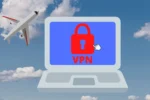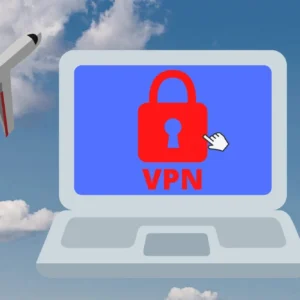Effective communication techniques are essential for fostering understanding and collaboration in both personal and professional settings. Mastering these techniques can significantly enhance your communication skills, enabling you to convey your thoughts clearly and confidently. Whether it’s through verbal communication or nonverbal cues, the ability to articulate your message effectively is crucial for successful interpersonal communication. Engaging in active listening also plays a vital role, as it helps you grasp the nuances of conversations and respond appropriately. By honing these skills, you can build stronger relationships and avoid common communication pitfalls.
When it comes to conveying ideas and emotions, employing successful strategies for interaction is key. Techniques that enhance dialogue, such as attentive listening and clear articulation, are fundamental components of effective interaction. Understanding the dynamics of both spoken language and body language can significantly improve your ability to connect with others. Furthermore, refining your interpersonal abilities allows for more meaningful exchanges, fostering a collaborative environment. Utilizing these approaches can lead to more productive discussions and greater mutual understanding.
Understanding Effective Communication Techniques
Effective communication techniques are essential in both personal and professional interactions. They encompass a range of skills that help individuals convey their messages clearly and understand others more thoroughly. Key components of effective communication include active listening, where one fully engages with the speaker, and verbal communication skills, which involve the choice of words and tone used in conversations. Mastering these techniques can greatly enhance interpersonal communication, fostering better relationships and reducing misunderstandings.
In addition to verbal skills, nonverbal communication plays a crucial role in how messages are received. Body language, facial expressions, and eye contact can significantly impact the effectiveness of communication. Understanding these nonverbal cues allows individuals to gauge the emotions and reactions of others, leading to a more nuanced exchange. By combining both verbal and nonverbal communication techniques, one can ensure that their intended message is delivered accurately and effectively.
The Importance of Active Listening in Communication
Active listening is a fundamental communication skill that goes beyond merely hearing words. It requires the listener to fully concentrate, understand, respond, and remember what is being said. This technique is vital in interpersonal communication, as it shows respect for the speaker and fosters a deeper connection. Engaging in active listening can lead to more meaningful conversations, as it encourages openness and trust between parties.
Moreover, active listening involves providing feedback and asking clarifying questions, which can help avoid miscommunication. By reflecting on what the speaker has said and summarizing key points, the listener demonstrates that they value the conversation. This practice not only enhances verbal communication but also strengthens relationships, making it a crucial skill for anyone looking to improve their communication abilities in both personal and professional settings.
Enhancing Verbal Communication Skills
Verbal communication skills are integral to effective interaction. These skills involve not just the words we choose but also the tone, pitch, and pace of our speech. To enhance verbal communication, individuals can practice clear enunciation and avoid jargon that might confuse the listener. By adapting one’s language to suit the audience, whether in a formal presentation or a casual conversation, one can ensure that the message is appropriately received.
Additionally, storytelling can be a powerful tool in verbal communication. Sharing relevant anecdotes or examples can make the message more relatable and engaging. This technique not only captures the audience’s attention but also aids in retention of information. Practicing these verbal communication skills can significantly improve one’s ability to connect with others, making conversations more impactful.
The Role of Nonverbal Communication in Interactions
Nonverbal communication encompasses a vast array of signals, including body language, gestures, facial expressions, and even posture. These signals often convey messages more powerfully than words alone. For instance, a warm smile can foster a welcoming atmosphere, while crossed arms may indicate defensiveness or disinterest. Understanding these nonverbal cues is crucial for effective communication, as they can often reveal a person’s true feelings and intentions.
In interpersonal communication, being aware of one’s own nonverbal signals is just as important as interpreting those of others. By aligning verbal messages with appropriate nonverbal cues, individuals can enhance their credibility and build trust. Practicing mindfulness regarding body language can lead to more authentic interactions, making it an essential aspect of effective communication techniques.
Building Strong Interpersonal Communication Skills
Interpersonal communication skills are vital for personal and professional success. These skills encompass a range of capabilities, including the ability to express oneself clearly, empathize with others, and navigate social situations. To build strong interpersonal communication skills, individuals should focus on developing emotional intelligence, which allows them to understand and manage their own emotions while being attuned to the emotions of others.
Moreover, practicing effective conflict resolution strategies is essential in interpersonal communication. Instead of avoiding disagreements, addressing issues openly and respectfully can lead to constructive outcomes. By fostering an environment where open dialogue is encouraged, relationships can be strengthened, and misunderstandings can be minimized, ultimately leading to more effective communication.
Strategies for Improving Communication Skills
Improving communication skills involves a commitment to ongoing learning and practice. One effective strategy is to seek feedback from others about one’s communication style. This can provide valuable insights into areas for improvement and help identify strengths. Additionally, participating in workshops or training sessions focused on communication can offer new techniques and reinforce existing skills.
Another strategy is to engage in regular practice through various forms of communication, such as public speaking or writing. The more one practices, the more confident and effective they will become. Incorporating active listening into daily conversations also reinforces these skills, as it encourages individuals to be more present and engaged in their interactions.
The Impact of Technology on Communication
Technology has revolutionized the way we communicate, creating both opportunities and challenges. With the rise of social media and instant messaging, communication has become more immediate and accessible. However, this shift has also led to a decline in face-to-face interactions, which are crucial for developing nonverbal communication skills. Understanding how to navigate digital communication effectively is essential in today’s world.
Moreover, while technology facilitates communication across distances, it can also lead to misinterpretations due to the absence of nonverbal cues. Therefore, it’s important to be mindful of tone and context when communicating online. Striking a balance between digital and in-person communication can enhance overall interpersonal skills, ensuring that messages are conveyed accurately and relationships are maintained.
Overcoming Barriers to Effective Communication
Barriers to effective communication can arise from various sources, including cultural differences, language barriers, and personal biases. These obstacles can hinder understanding and lead to frustration in conversations. To overcome these barriers, individuals must cultivate awareness and sensitivity towards others’ backgrounds and perspectives. This openness can facilitate smoother communication and foster mutual respect.
Additionally, it’s important to address personal biases that may cloud judgment during interactions. Practicing empathy and striving to see situations from others’ viewpoints can help mitigate misunderstandings. By actively working to dismantle these barriers, individuals can significantly improve their communication skills and create a more inclusive environment for dialogue.
The Future of Communication Skills in a Globalized World
As the world becomes more interconnected, the importance of effective communication skills is more pronounced than ever. In a globalized environment, individuals must navigate diverse cultures and languages, making strong communication skills essential for collaboration and success. Developing cultural competence and adaptability are key components of effective communication in a global context.
Furthermore, the rise of remote work and virtual teams has transformed the landscape of communication. Being able to communicate effectively across various platforms and technologies will be crucial in ensuring productivity and maintaining team cohesion. Investing in the development of both verbal and nonverbal communication skills will prepare individuals to thrive in this evolving communication landscape.
Frequently Asked Questions
What are effective communication techniques to enhance communication skills?
Effective communication techniques include active listening, clear verbal communication, and understanding nonverbal cues. By practicing these skills, individuals can improve their interpersonal communication and convey their messages more effectively.
How can active listening improve my communication skills?
Active listening is a key effective communication technique that involves fully concentrating, understanding, and responding to what is being said. This practice not only enhances your communication skills but also fosters better interpersonal relationships by showing empathy and respect.
What role does nonverbal communication play in effective communication techniques?
Nonverbal communication is a crucial component of effective communication techniques. It includes body language, facial expressions, and tone of voice, which can significantly impact the message being delivered. Mastering nonverbal cues can enhance your overall communication effectiveness.
Can effective communication techniques help in resolving conflicts?
Yes, effective communication techniques such as active listening and clear verbal communication are essential in conflict resolution. By understanding each other’s perspectives through interpersonal communication, parties can find common ground and resolve disputes more amicably.
What are some examples of verbal communication techniques?
Examples of verbal communication techniques include using clear and concise language, asking open-ended questions, and providing constructive feedback. These techniques help ensure your message is understood and facilitate better interpersonal communication.
How can I improve my interpersonal communication using effective communication techniques?
Improving your interpersonal communication can be achieved by practicing effective communication techniques such as active listening, being aware of nonverbal signals, and engaging in open dialogue. These strategies help create a more meaningful connection with others.
What is the significance of clarity in effective communication techniques?
Clarity is vital in effective communication techniques as it ensures that the intended message is understood without ambiguity. Clear verbal communication helps prevent misunderstandings and enhances overall communication skills.
How does feedback contribute to effective communication techniques?
Feedback is a fundamental aspect of effective communication techniques. It allows individuals to gauge understanding and make necessary adjustments in their communication style, thereby improving interpersonal communication and promoting a collaborative environment.
| Key Point | Description |
|---|---|
| Active Listening | Paying full attention to the speaker, understanding, and responding thoughtfully. |
| Non-Verbal Communication | Using body language, facial expressions, and gestures to convey messages. |
| Clarity and Conciseness | Expressing ideas clearly and directly to avoid misunderstandings. |
| Empathy | Understanding and sharing the feelings of others to build rapport. |
| Feedback | Providing constructive feedback to encourage improvement and clarity. |
Summary
Effective communication techniques are essential for fostering understanding and collaboration. Mastering active listening ensures that you fully engage with the speaker, while non-verbal communication enhances your message beyond words. Clarity and conciseness in your expressions can significantly reduce the risk of misunderstandings. Additionally, showing empathy helps to connect with others on a deeper level, making conversations more meaningful. Finally, providing and receiving feedback is crucial for continuous improvement in communication skills. By implementing these effective communication techniques, individuals can enhance their interactions in both personal and professional settings.










